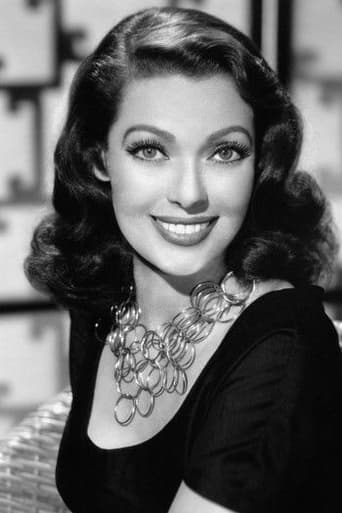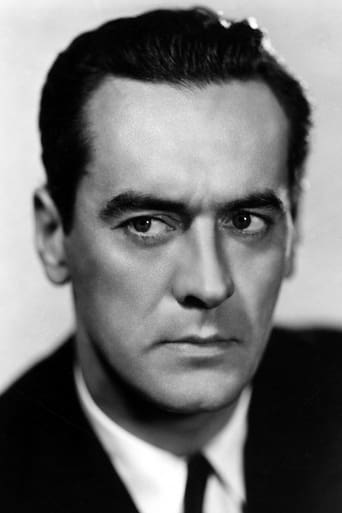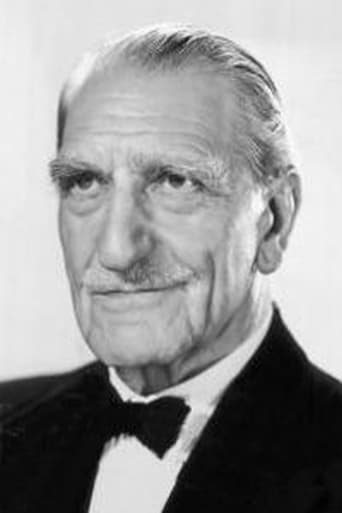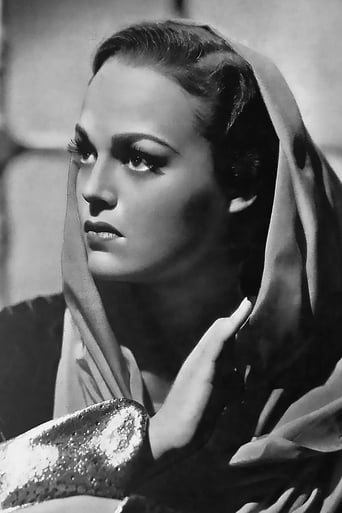SpuffyWeb
Sadly Over-hyped
Spoonatects
Am i the only one who thinks........Average?
Nayan Gough
A great movie, one of the best of this year. There was a bit of confusion at one point in the plot, but nothing serious.
Zandra
The movie turns out to be a little better than the average. Starting from a romantic formula often seen in the cinema, it ends in the most predictable (and somewhat bland) way.
drystyx
This loosely told story of the Crusades isn't so bad historically, if one allows for this one "crusade" to represent a total summation of all the Crusades, probably de Mille's goal.But while de Mille gives a fairly accurate portrayal of some historical characters (if one reads between the lines), he gives a totally bizarre portrayal of their personal lives that could not possibly be believed.First, the few things that make sense. Richard was not a "Christian", and de Mille shows this. He gave the usual lip service, but he represented the "mercantile" endeavors of those who used the papal promises for their own ends. The pope made the mistake of granting Richard rule over all Christians in the conquered lands. What this led to was Richard simply slaughtering any person who wasn't guaranteed to be under his rule, which meant non Christians.This was the savagery of the Crusades. It had nothing to do with religion, but of men taking advantage of religion. In a subtle way, de Mille does show this.Saladin was well depicted. Despite what critics say, he was one of the more benevolent of warriors, which isn't saying a lot, but if you were captured by a Moslem force, you would rather it be by Saladin than most others. He could be reasoned with. if nothing else, you could convert to Islam and be spared by him.The business with the sneaky European who Saladin killed is derived from another instance, well chronicled, dealing with a man whose evil was not nearly as "Mickey Mouse" as this villain, and who would've tried any person's patience. he was the terrorist of the era, and Saladin offered the cup of safety to everyone he captured but this man. The incident is depicted fairly faithfully in the modern epic "Kingdom of Heaven".de Mille simply combines all the events into one main event, and that's fair poetic license. Certainly closer to the truth than "Tombstone" is of Wyatt Earp and the Clantons.The personal lives are laughably unbelievable. King Richard comes across as gay (and he probably was gay or bisexual), resisting romance with the gorgeous princess of France, spurning her, and then later becoming enchanted with a very homely princess of another land. Loretta Young looks her worst for this. She is figuratively the ugly step sister, and we see the hand of women in the making of this to be a chick flick, where the homely girl gets the romance and the pretty girl is out in the cold. Nice fantasy for the female wallflowers, but men had to be shaking their heads at this, particularly when Saladin falls for the pale homely girl, when we know how beautiful Arabian women are. Loretta is not usually this plain. Her hair looks pitifully bland, but we have to remember this is a Hollywood movie, and Hollywood has always pushed the "blonde woman" look in heir chick flicks to appease the female audience.We get a lot of ho hum, no risk, same old stuff. The nice guys all die, of course, true to Hollywood clichés. The hero has to start off as a creep, and actually he's a total monster, but de Mille does some clever snake oil soft soap to make us think he isn't a monster.It's easily one of de Mille's worst works. But we see some of the skills that made de Mille great later. de Mille knew how to make a logical sequence of events, how to cut and edit, the importance and timing of comic relief. he was still in the experimental stage on his total skills, but we see a hint of them here.
Steffi_P
Having witnessed the flop of his last few contemporary dramatic pictures, Cecil B. DeMille made a pledge to the public that from now on he would only make epics. True to his word, he strove to make each successive picture more stupendous than the last. He had made some very effective shoestring epics in the poverty-stricken early 30s, but by 1935 the worst of the depression was over and DeMille could at last be reunited with the big budget.While DeMille had proved on Sign of the Cross (1932) and Cleopatra (1934) that he could make a big picture without masses of extras or impressive sets, he certainly knows how to make the most of those assets when he does have them. It is in The Crusades that we see the development of the style of presentation that he employed for all his subsequent epics. Rather than bombard us with the colossal, he likes to gradually reveal the vastness of a place by slowly and smoothly pulling the camera back. During these moves he usually has an extra or two move horizontally across the frame at a similar pace to the camera, giving the manoeuvre extra grace and momentum. Then there are the battle scenes, tense and frenzied creations of Anne Bauchen's superb editing. These are similar to the ones in Cleopatra, but far more effective, not because of the higher production values, but because the shots are held for longer and their sequencing is better timed.And while DeMille clearly loves the massive crowd shot, he has enough sense to shrink the space and simplify the setting when it comes to key dialogue scenes. Compared to the busy outdoor locations many of the interiors are quite plain, which helps to focus us entirely on the actors, their expressions and their words. The transitions to these dramatic moments are often very smooth, with the drop of a tent flap or simply a change of angle to frame the actors against a bare wall. DeMille was an expert in turning the spectacle on and off, as it were, according to the demands of the narrative.Given the above, it's a pity that, like most DeMille pictures of this era, The Crusades is dramatically rather weak. The dialogue is bland, and most of the characters are lazily-written stereotypes. In the early scenes, there seems to have been this attempt to cram in as many "Olde Englande" accessories as possible, with a cheeky minstrel, a burly blacksmith, the king and his court all hanging out together. Mind you, there is at least a fairly decent character arc in that King Richard is portrayed as a kind of medieval cad who joins the crusade for ulterior motives, but is eventually humbled by his experiences. It's also a refreshingly mature approach to make Saladin an honourable foe, although there is of course still the obligatory moustachioed villain in the form of some anachronistic minor king (played by Joseph Schildkraut, naturally).After having suffered Henry Wilcoxon's wooden turn as Mark Anthony in Cleopatra, it's a major disappointment to see him again in a leading role. You might wonder why DeMille so persistently cast amateurs like Wilcoxon, until you realise he selected players primarily for their physicality, their talent being of secondary concern. In this light it makes sense for Wilcoxon, with his prominent brow and broad shoulders, to play a king. And although Joseph Schildkraut was, as it happens, a very good actor, DeMille repeatedly cast him as these Judas figures because of his thin face and piercing eyes.But this is DeMille. Script and cast will always play second fiddle to the director's showmanship. Despite all the baloney and anachronism, his visual style is on top form here. The Crusades is like a stained-glass window in a church. It will not reach us on an emotional, human level, but it is full of grace and majesty. Yes, DeMille is often called a Victorian moralist, but in his presentation and imagery he was practically medieval. And we should forgive him, because he did it so well.
hundd44
Nobody ever accused DeMille of painstaking historical accuracy - his films are far more the type to set the mood and tell a good story with a historical period as a background. "The Crusades" is a prime example - historically Richard the Lionheart was a lousy king of England who barely spent a year in England during his entire reign - to him, England was merely a source for taxes and troops so he fight the his continental wars. The opening scene of the movie when the Chrisitians captured at Jerusalem are being sold into slavery (with the obligatory Muslim leering at the blonde Christian beauties) is also historically suspect. Saladin and his generals expected the Christian nobility that was captured at Jerusalem to ransom the common people prisoners. When they didn't, Saladin and his generals were so disgusted at such a lack of concern that they ended up ransoming many of the commoners themselves - supposedly Saladin personally ransomed several hundred so they could return to Europe. But I digress.This is a movie which contains a scene that has stayed with me for several decades. I doubt if it would play well today - I can't think of any actors who could pull it off. The scene is where the Christian leaders of the Crusade meet Saladin for the first time when Saladin comes to warn them to go back to Europe. The various Kings, dukes, et al are all seated and listen to Saladin's message. Richard the Lionheart then steps up and tells Saladin that the Christians aren't afraid, that their armies are powerful and to illustrate his point he has two servants hold an iron mace while he proceeds to cleave it in two with his sword. An impressive display of the strength of his blade. But Saladin has a priceless response. He walks over to Berengaria and asks if he can have her silk veil. He takes the veil, tosses it into the air, and then pulls his own sword and positions it below the falling veil, blade up. The veil falls onto the blade and is cut in two by its own weight - for this was a famed Damascus blade. Saladin's point - brute strength isn't everything. Of course, all of the Christian nobles just drop their mouths in utter shock at the demonstration. A priceless scene - and an illustration of the "little things" that separate a humdrum film from one you enjoy watching time and time again.
MARIO GAUCI
To begin with, being a fan of the epic genre, I had always wanted to check this one out and, in fact, was very pleased when Universal released it as part of their 5-Disc Cecil B. De Mille collection; however, since I already owned both THE SIGN OF THE CROSS (1932) and CLEOPATRA (1934) via TCM showings, I kept postponing the purchase of this set – until I acquired the lot through a friend of my father's! Having been duly impressed with those two De Mille spectaculars, I had intended to watch this immediately (I got the film around the middle of last year) but for various reasons – I even had to exclude it from my Christmas viewing – I could only get to it now that Easter is approaching! Incidentally, the 5th of March happened to mark the centenary from the birth of actor Rex Harrison, who had starred as Saladin (the villainous 'infidel' of THE CRUSADES) in KING RICHARD AND THE CRUSADERS (1954), which I recorded off Italian TV (even if I had already watched it and in spite of its poor reputation) expressly for the purpose of accompanying my viewing of De Mille's film! Anyway, THE CRUSADES is another notable achievement (from the days prior to the epic heyday of the 1950s and 1960s) which goes to prove – yet again – that De Mille was perhaps cinema's greatest purveyor of hokum disguised as inspirational art for the masses (even if this particular example, reportedly, flopped at the box-office).The central relationship between gorgeous Loretta Young (such strong female presences abound in the director's work) and De Mille regular Henry Wilcoxon (an unusually handsome, and Godless, Richard the Lionheart – amusingly referred to by Saladin as "The Lion King"!) goes through some interesting, yet oddly believable, tangents during the course of the film. Starting off in antagonistic vein more typical of then-current screwball comedies (he even prefers carousing with his men to their wedding ceremony, where his place is eventually taken by the royal sword!), it develops into one that borders on amour fou – which could jeopardize the outcome of the whole crusade (it's actually comparable to the bond-to-the-death between Roman centurion Fredric March and Christian slave Elissa Landi in the earlier THE SIGN OF THE CROSS)! The excellent supporting cast includes, among others, Ian Keith (as Saladin), Joseph Schildkarut (typically sneaky as one of the Christian rulers), C. Henry Gordon (as the French King, whose sister Katharine De Mille – the director's adopted daughter – Richard has deliberately spurned), Alan Hale (as Richard's minstrel/sidekick, a Little John type that would soon become his trademark), C. Aubrey Smith (as the old hermit who is challenged by the overly confident Saladin at the beginning of the picture to rally the Christian countries in a crusade against his forces and, later, made hostage and chained to a cross to bar passage to the advancing army, he asks Richard to proceed with the attack regardless!) and Mischa Auer (in an early role as a monk).While the script obviously eschews the Robin Hood legend that has become associated with Richard and the Crusades (the Douglas Fairbanks version of 1922 about that popular outlaw figure, in fact, spends more time with him as a knight than the proverbial 'Merrie Man'!), subtlety is still the last thing one would hope to find in a De Mille pageant. In fact, Young's abduction by the Muslims (with her dressed as a sentry in a suicidal bid to end the discord between the various royals!) is pretty contrived; similarly, the fact that Young is contended in the terms laid down by Saladin for the truce with the Christian world is pure Hollywood. With this in mind, the dialogue (co-written by Dudley Nichols) is consciously stilted throughout – albeit featuring such good lines as Saladin's defiant claim to the monarchs gathered in their tent, "There is room enough in Asia to bury all of you!" Made after the dreaded (and stifling) Hays Code came into force, it's not as bloodthirsty as the afore-mentioned THE SIGN OF THE CROSS – even so, the battle scenes are quite realistic (with the clanging of heavy steel being heard as the opposing armies clash in a confusion of warriors and horses) and may well have influenced Sergei Eisenstein's Alexander NEVSKY (1938). There is one evident display of viciousness here on an isolated member of Schildkraut's treacherous army as a clutch of Muslim riders (appearing on the scene to rescue the cornered Wilcoxon at the instigation of Saladin himself, in the hope of thus winning Young's love) fall on him en masse with their spears. Boasting superlative photography (Victor Milner's work in this capacity presented the film with its sole Oscar nomination) and massive crowd scenes, the film survives as tremendous entertainment even after all these years. Incidentally, it seemed common practice in spectacles of the era to provide villains of the Muslim persuasion – as can be gathered from the likes of ABDUL THE DAMNED (1935; a British production I first watched over Christmas), THE LIVES OF A BENGAL LANCER (1935), THE CHARGE OF THE LIGHT BRIGADE (1936) and GUNGA DIN (1939).




